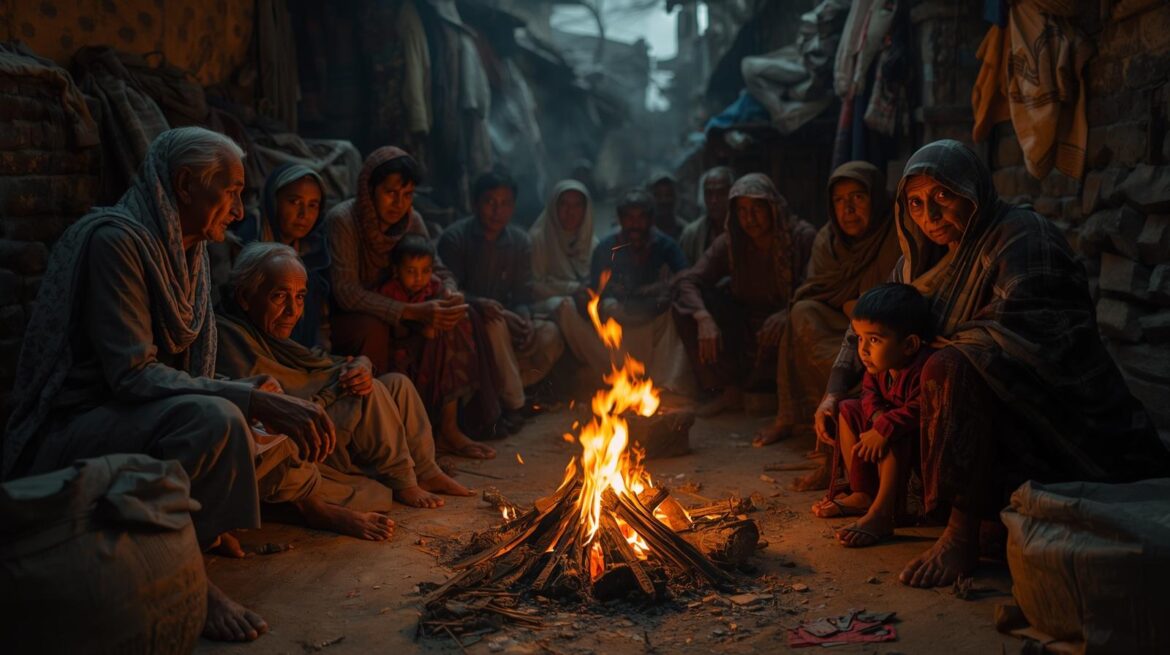As India braces for the onset of winter, the National Human Rights Commission (NHRC) has issued a stark warning to 19 state governments and four Union Territory administrations, urging them to take urgent pre-emptive measures to protect the country’s most vulnerable citizens from deadly cold waves.
Citing National Crime Records Bureau (NCRB) data, the Commission highlighted that between 2019 and 2023, a staggering 3,639 people lost their lives due to exposure to extreme cold. The majority of these deaths affected the elderly, children, infants, the homeless, and destitute individuals — groups with limited or no access to shelter, warm clothing, and medical care.
“Cold waves are not just a seasonal inconvenience; they are a serious human rights issue,” the NHRC noted in its communication. “Lack of preparedness and inadequate relief mechanisms have repeatedly cost lives, underscoring the urgent need for coordinated action by state and Union Territory administrations.”
Human Stories Behind the Numbers
While official statistics paint a grim picture, the human cost is far more personal and immediate. Across northern and central India, families living on streets and in makeshift shelters face the daily reality of sub-zero temperatures, with infants and elderly citizens most susceptible to hypothermia, frostbite, and respiratory illnesses. Many die quietly in the night, unnoticed until the morning.
Experts stress that climate change has intensified the severity and unpredictability of cold waves, making extreme winter weather a growing threat to human rights. “These events are no longer sporadic; they are increasingly frequent and deadly,” said Dr. C. K. Jain, a public health expert in urban poverty. “Without targeted relief and proactive intervention, vulnerable populations continue to pay the highest price.”
Guidelines for Relief
In its advisory, the NHRC has reiterated recommendations from the National Disaster Management Authority (NDMA) aimed at mitigating cold-wave impact:
- Establish day and night shelters in urban and rural areas for those without homes.
- Implement medical care protocols for cold-related illnesses, including hypothermia and frostbite.
- Monitor relief efforts rigorously to ensure resources reach those most in need.
- Sensitize government officials at the local, district, and state levels to identify and protect vulnerable individuals proactively.
The Commission has requested detailed action-taken reports from all concerned authorities, emphasizing that timely reporting and accountability are crucial to saving lives.
A Call for Urgent Action
NHRC officials stressed that preventive measures could mean the difference between life and death for thousands. “Every winter, we witness a repeat of the same tragedy,” said an NHRC spokesperson. “Deaths from cold waves are preventable if authorities act decisively and in coordination with local administrations, NGOs, and community groups.”
The Commission further underscored that extreme weather events have a direct impact on human rights. Vulnerable populations, especially those without shelter or adequate resources, face disproportionate risks, which must be addressed as a priority. The NHRC called on states and UTs to integrate cold-wave preparedness into their broader disaster management plans, including vaccination drives, distribution of warm clothing, and health check-up camps for at-risk populations.
Looking Ahead
As winter looms, the NHRC’s advisory serves as a critical reminder of the intersection between climate, vulnerability, and human rights. With over 3,600 lives lost in just five years, the Commission’s warning is not merely procedural — it is a call to protect lives before the first severe cold wave hits.
Authorities are urged to move swiftly, ensuring shelters are operational, healthcare systems are ready, and local officials are fully aware of the stakes. NGOs and civil society groups are also expected to play a key role in bridging gaps and reaching populations that might otherwise remain invisible to the state apparatus.
For the millions of Indians living on the margins — children huddled in cold alleys, elderly citizens shivering in inadequate shelters, and destitute families struggling for warmth — decisive action this winter is not just necessary; it is a matter of life and death.






